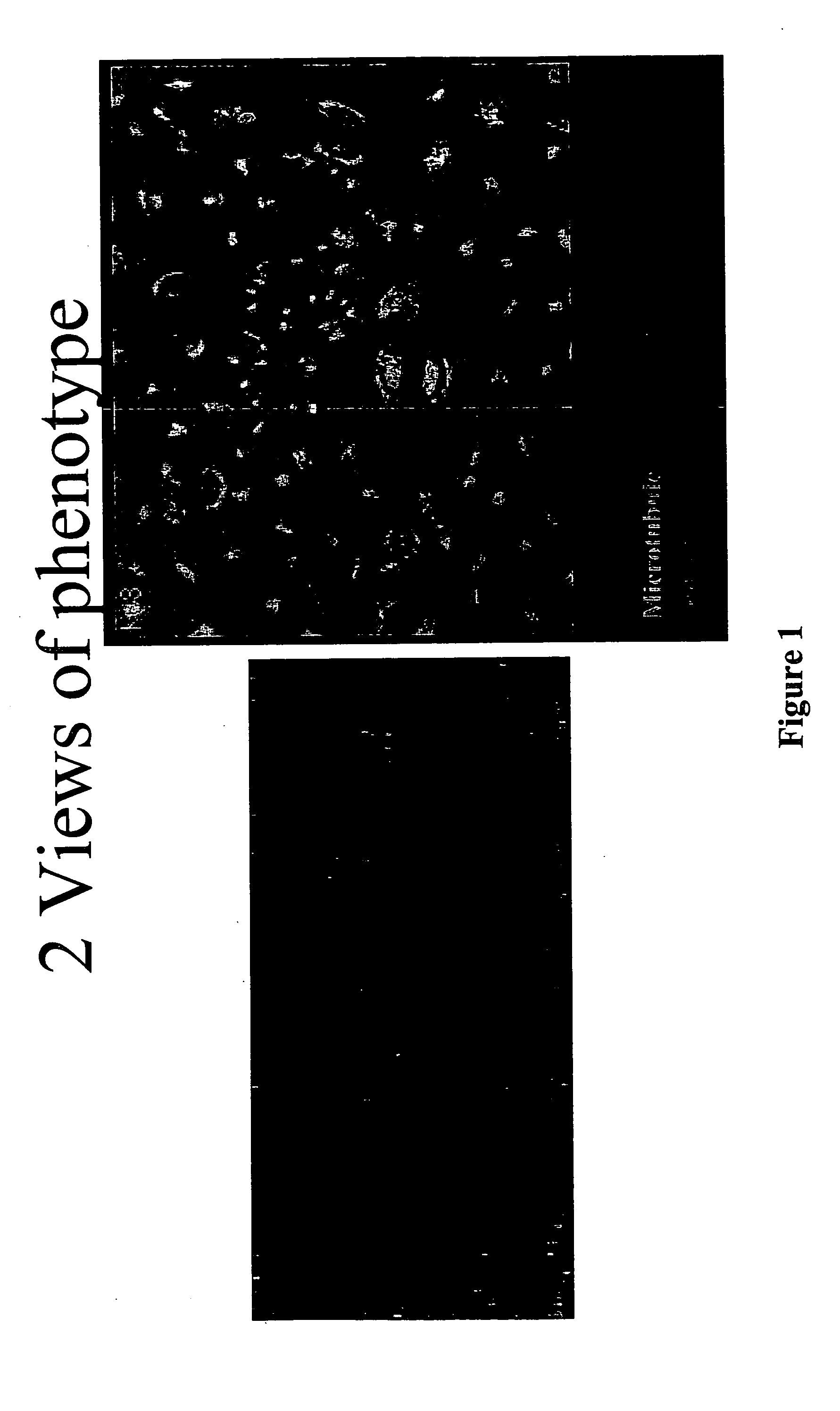Computer-assisted analysis
- Summary
- Abstract
- Description
- Claims
- Application Information
AI Technical Summary
Benefits of technology
Problems solved by technology
Method used
Image
Examples
example 1
[0086] To determine the reproducibility of cytological profiling, a set of 60 chemical compounds of known activity or mechanism of action were contacted with NCI 60 cells grown in 384-well plates. Each of the compound was administered to the cells at 16 different concentrations. After 20 hours, the cells were imaged by taking 4 images per well with a 20× objective (approximately 400 cells). Two imaging replicates and two full experimental replicates were obtained resulting in 8 images per well and 16 images for each compound / concentration combination. These images (approximately 120 GB of image date) were then used to extract approximately 6 GB of numerical data. These numerical data was then analyzed using statistical analysis such as K-S statistics and clustering to look for correlations and trends among the 60 compound tested. The data was also used to test the reproducibility and reliability of cytological profiling.
[0087] 384-well plates were seeded with N...
example 2
Distinguishing Drug Mechanism using Automated Microscopy and Multi-Dimensional Dose-Response Profiling
[0091] In the context of drug discovery, profiling technologies are useful in measuring both drug action on a desired target in the cellular milieu and drug action on other targets. Ideally, such profiling should be performed as a function of drug concentration, since several factors make the effects of drugs highly dose-dependent. These include differential sensitivity of downstream pathways to degree of perturbation of a primary target, and binding of drugs to multiple targets with different affinities. In some cases, therapeutic mechanism may involve binding to more than one target with differing affinity (J. G. Hardman, L. E. Limbird, A. G. Gilman, Eds., The Pharmacological Basis of Therapeutics (McGraw-Hill, ed. 10, 2001); Marton et al., Nat. Med. 4:1293 (1998); each of which is incorporated herein by reference). To date, drug effects have been broadly profiled using transcrip...
PUM
 Login to View More
Login to View More Abstract
Description
Claims
Application Information
 Login to View More
Login to View More - R&D
- Intellectual Property
- Life Sciences
- Materials
- Tech Scout
- Unparalleled Data Quality
- Higher Quality Content
- 60% Fewer Hallucinations
Browse by: Latest US Patents, China's latest patents, Technical Efficacy Thesaurus, Application Domain, Technology Topic, Popular Technical Reports.
© 2025 PatSnap. All rights reserved.Legal|Privacy policy|Modern Slavery Act Transparency Statement|Sitemap|About US| Contact US: help@patsnap.com



